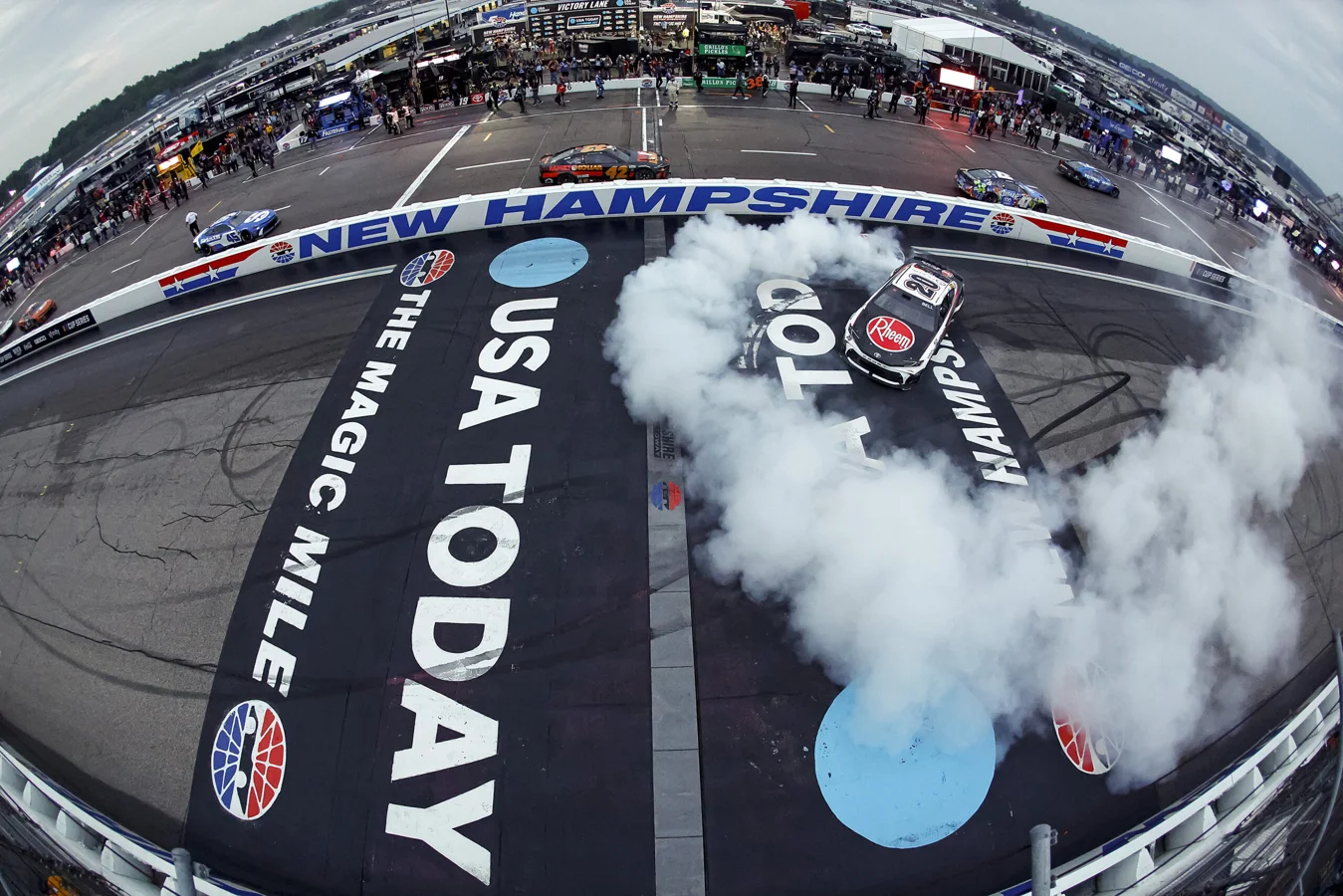Daniel Hemric experienced a harrowing moment during the early laps at New Hampshire Motor Speedway, when his No. 19 chevrolet/”>Chevrolet was caught in a major accident before completion of the opening lap, narrowly avoiding what could have been a race-ending disaster. The Daniel Hemric New Hampshire crash put his playoff hopes on the brink, highlighting the razor-thin line between fortune and heartbreak that defines NASCAR racing.
Chaos Strikes Hemric in the Opening Lap at New Hampshire
During the very first lap, two slower trucks collided directly ahead of Hemric, setting off a chain-reaction incident that forced his Chevrolet into a sudden, uncontrollable skid. Hemric’s car darted sideways towards the concrete wall, while traffic bunched up behind him, creating a potential recipe for a multi-vehicle crash. New Hampshire Motor Speedway is notorious for its unforgiving barriers, and, for a moment, it seemed as though the No. 19 team’s championship campaign might end abruptly in Stage 1.
Displaying the poise of a seasoned competitor, Hemric avoided the natural instinct to overcorrect. Instead, he kept steady hands on the wheel, allowing his machine to slide into the safer barrier without ricocheting back into oncoming traffic. Replay footage revealed just how narrowly several three-wide trucks escaped involvement, with Hemric’s swift decision likely preventing a much larger pileup. Such split-second awareness underscores why Hemric is regarded as more than just a good driver, but one of the sport’s most consistently savvy competitors.
Early Setbacks Hit Hard When Playoff Stakes Are High
In the playoff environment, every lap carries heightened significance—especially at this stage of the season. To face adversity before even completing a full circuit is especially deflating for any driver, as those opening moments are typically filled with optimism and nerves. For Hemric and his crew, the sudden sight of bent fenders threatened to derail months of preparation, jeopardizing their status in the Round of 10 finale at New Hampshire.
In racing, unpredictability is an ever-present threat. Hemric’s predicament was a stark reminder that competitors can pour over strategy and car set-up with their teams all week, only for unpredictable traffic or mishaps to change fortunes in a heartbeat. The psychological impact of such incidents is substantial, as the combination of lost positions and car damage challenges drivers to regroup and recover under immense pressure.
The Difficult Challenge of Racing at New Hampshire Motor Speedway
New Hampshire’s track imposes unique difficulties rarely matched elsewhere on the NASCAR circuit. The flat corners and lengthy straightaways offer little margin for error, rapidly punishing even slight mistakes. Hemric’s collision was a familiar sight for many who have felt the speedway’s lack of forgiveness—its concrete perimeter neither absorbs nor relents, often multiplying the consequences of minor lapses.
Rapid decision-making is vital at New Hampshire, as cars cannot gradually scrub off speed as at other venues. Drivers like Hemric know when to accept a less damaging outcome rather than fighting a losing battle and risking greater disaster. A key danger in this incident stemmed from the mismatch in speed between lapped trucks and lead vehicles, amplifying the risk for front-runners when struggles unfold unpredictably ahead of them.
The Personal Side of a High-Speed Scare
Beneath the professional persona and safety gear, Daniel Hemric faces the same vulnerability as anyone in a dangerous profession—trying to excel while knowing that a split-second decision can change everything. The moment he was able to exit his car unscathed and radio relief to his team, a sense of genuine gratitude was heard from driver and crew alike. For NASCAR’s toughest, their resilience is legendary, but even they feel the immediate fear and relief at walking away unharmed.
Behind the scenes, the role of Hemric’s crew chief, spotter, and safety workers was crucial. They communicated calmly, guiding him and ensuring he remained composed as crews responded. Such supportive teamwork, though often unseen by fans, makes a significant difference when catastrophe looms. For drivers and their families, the priority remains clear—personal safety overshadows all championship ambitions or playoff points. By controlling his car’s path and taking a less destructive impact, Hemric possibly prevented injuries that could have impacted him much longer than the ramifications of a race result.
Moving Past Adversity and Looking to the Remainder of the Season
Incidents on Lap 1 are a true measure of both driving acumen and inner character, testing a team’s resolve before the competition even develops in earnest. Daniel Hemric’s experience—remaining cool under pressure and resisting potentially catastrophic errors—demonstrated why veteran poise is irreplaceable. Ultimately, the decision on whether the No. 19 Chevrolet could continue racing depended on assessments of the crash damage by his dedicated team.
Modern NASCAR safety technology functioned as intended, enabling Hemric to emerge from the wreck without major injury and keeping open the possibility of rejoining the field. These advances in safety are a win, regardless of the immediate sporting setbacks. For NASCAR fans and participants alike, moments such as the Daniel Hemric New Hampshire crash encapsulate the unpredictable drama and emotional highs and lows that make racing compelling—sometimes within mere moments of the start.
